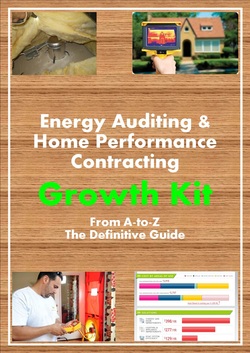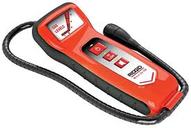Passing the BPI Exam With Energy Auditor Training
FREE BPI PRACTICE EXAMPUT YOUR HOME PERFORMANCE BUSINESS ON ROCKET FUELENERGY AUDITORGet the only Energy Auditor Marketing Newsletter with monthly strategies and tactics to grow your home performance business.
The main topics of the BPI BA exam are listed out below. Click on a link that interests you, or you need some brushing up on to learn more on each subject.
1. Building Science Fundamentals 1a. Basic terms and definitions 1b. Principals of energy, air & moisture 1c. Combustion science 2. Buildings and Their Systems 2a. Building components 2b. Conservation strategies 2c. Comprehensive building assessment process 2d. Design considerations 3. Measurement and Verification of Building Performance 3a. Applied diagnostics and troubleshooting 4. BPI National Standards and Project Specifications 4a. Comprehensive building assessment 5. Analyzing Buildings Systems 5a. Comprehensive building assessment 5b. Appliances and lighting 6. Conduct and communications 6a. Conservation strategies |
BPI Written Exam - Section 2 Buildings and Their Systems
The basic fuel types are:
1. Electricity
Electricity is delivered from utility company generating stations powered by coal or hydro-power. Power comes to our homes through transmission lines at either 240V or 120V to our breaker box. Safety considerations are exposed wires, loose wire connections and increases changes of electrocution due to perspiration. 2. Natural gas Natural gas is typically delivered at 3- 7 PSI to household gas meters. Safety considerations for natural gas fuel delivery systems are leaks particularly around fittings and bends. A CO leak detector should be used to sniff all gas lines, 360 degrees around the line, per BPI standard. A leak detector signals a gas leak is present by the frequency of its beeps. If you find a gas leak present, BPI standard is to use a soap solution to find the location of the leak to see where the solution bubbles up. Other safety considerations is the backdraft of combustion equipment from gas water heaters and furnaces. A atmospherically vented appliance should naturally draft CO and combustion gasses out of its flue to the outside. A failed draft could be from a blocked flue from a birds nest or dead bird blocking the flue stack. Spillage of combustion gasses out of the diverter is another safety consideration. Spillage may be caused from a negative pressure within the house from a tight house, a dryer in a the same room as a water heater, or a lot of negative pressure from the AHU and exhaust fans. High CO levels is another safety consideration from the incomplete combustion of natural gas. This could be caused from not enough oxygen supplied to the combustion appliance. To fix the CO level, you should let more oxygen into the appliance by raising the oven higher, or adjusting the oxygen meter within the oven. 3. Propane
Propane is delivered the same way natural gas is delivered as are the safety considerations. 4. Photo voltaic Solar power converts the suns light into direct current electricity, an inverter then converts DC into AC electricity which is then fed into the circuit breaker of the house. Lock-out-tag-out protocols should be followed when working with DC and photo voltaic power. Next Section2a. Building Components
2b. Conservation Strategies
2c. Comprehensive Building Assessment Process
2d. Design considerations
|


